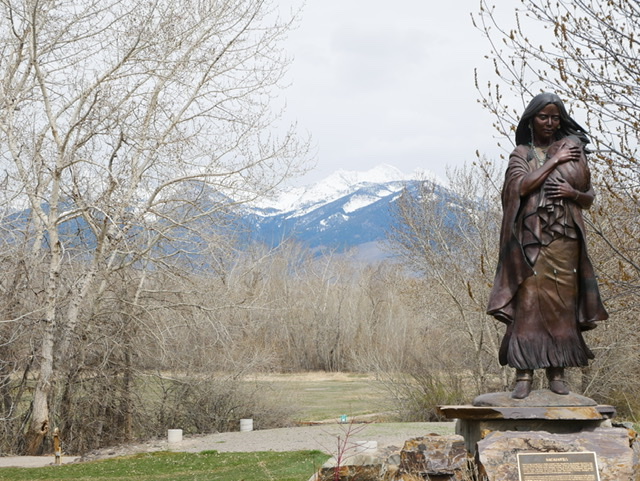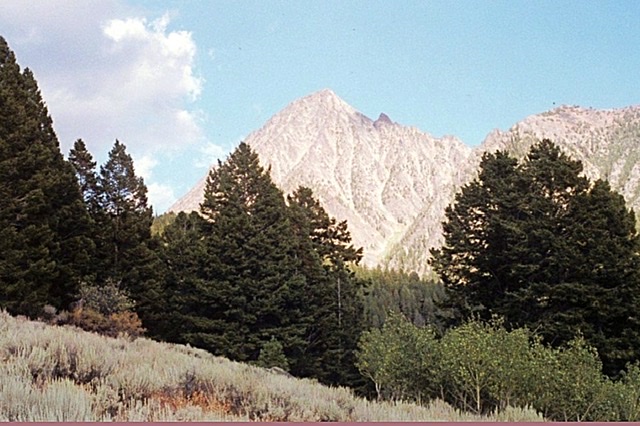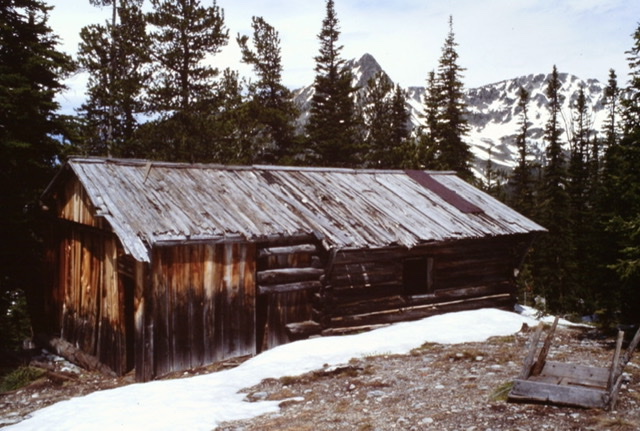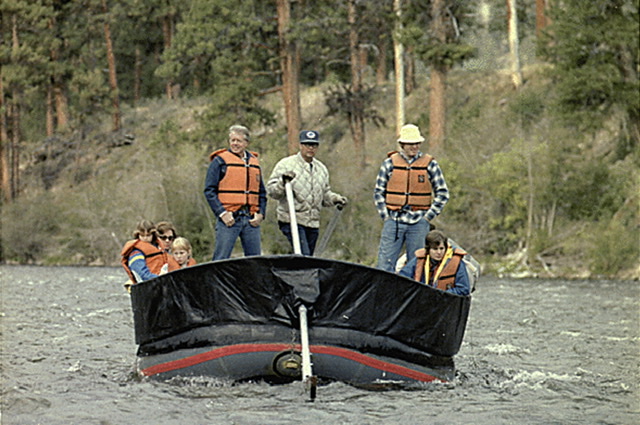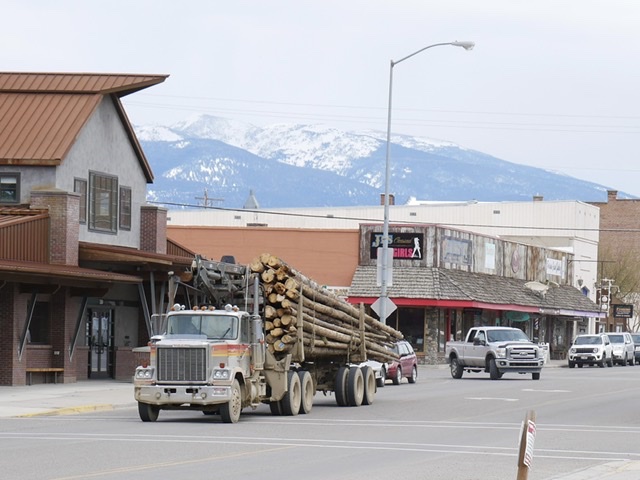An abbreviated version of this article was first published in Idaho Magazine July 2022, Vol. 21, No. 10
A Point of Inflections
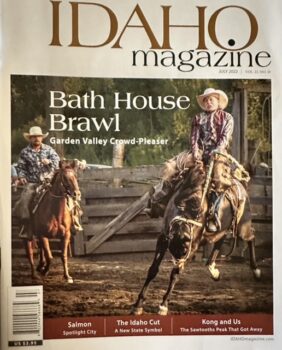 I was an interloper when I arrived in Salmon City in 1978. While it is natural to feel that way any time you move to a new town, I was in fact moving into a whole new world. I felt self conscious primarily because my 1973 AMC Gremlin seemed as out of place among the pickup trucks, the Jeeps, the Ford Broncos and flatbed trucks as I was.
I was an interloper when I arrived in Salmon City in 1978. While it is natural to feel that way any time you move to a new town, I was in fact moving into a whole new world. I felt self conscious primarily because my 1973 AMC Gremlin seemed as out of place among the pickup trucks, the Jeeps, the Ford Broncos and flatbed trucks as I was.
I didn’t know it when I arrived that both Salmon and I were approaching historic inflection points. After five years of constant moving from job to job, from state to state and even country to country I would live in Idaho for the rest of my years. Salmon on the other hand was destined to become a gateway for the future management of our magnificent public lands.
That Spring I was in graduate school at the University of Michigan. As the end of the Winter semester was nearing I realized I was running out of money. It was too late to apply for a Summer job with my first choice, the National Park Service. A friend suggested the Bureau of Land Management (BLM). Having wanted to move to Idaho, my mother’s “middle of no where,” since visiting my great aunt in 1972, the first place I called was the BLM’s Idaho State Headquarters in Boise. [Idaho Magazine, March 2022]
Surprisingly, my phone call was almost immediately transferred to the BLM’s Salmon office. Even more surprisingly after several brief interviews with several employees, I was offered a temporary job with the BLM’s Salmon office. At that point I had no idea what type of job I was being offered or for that matter exactly where Salmon was located. My head was spinning. However, to paraphrase the Wizard of Oz’s explanation of how he became the Wizard, “Times being what they were (I was broke), I accepted the job.”
A bit dazed by the rapidity of the last 45 minutes I hung up the phone and headed to the library to figure out where I was going. An atlas and a brief skimming of the Idaho Encyclopedia told me all I thought I needed to know. Salmon was a small town with a population of 3,300 located on the Salmon River in the middle of the mountains next to the Idaho Primitive Area. The word “idyllic” floated through my thoughts as I finished my final exams and packed. I was finally moving to Idaho.
The town’s history is well documented. Lewis and Clark are credited as the first Whites to pass through the future site of Salmon, reaching the area in August 1805. They were accompanied by Sacajawea who was born nearby. The Salmon area remained relatively untouched by Whites until 1855 when the Mormons established a settlement about 20 miles south of current day Salmon. They occupied the settlement as a mission until 1858. This mission was named Fort Limhi (now spelled Lemhi) for King Limhi, a king found in the Book of Mormon. Thomas S. Smith led the missionaries and George Washington Hill acted as the group’s interpreter. The “Limhi” name has carried down through time and was attached to the Lemhi River and it’s valley, the Lemhi Range Mountains, Lemhi Pass and Lemhi County.
At one point the mission grew to over 200 people. These settlers brought cattle to the valley and constructed irrigation ditches. Reportedly, at least three of the missionaries married Shoshone women. The Bannocks and Shoshone became disillusioned with the missionaries and the resulting conflict led to the abandonment of the fort. Miners eventually took over the fort in 1862.
The miners we busy prospecting and their discoveries quickly brought in a flood of people to the valley. Salmon City was founded in the Spring of 1867 at the confluence of the Lemhi River and the Salmon River which was about 20 miles northwest of where Fort Limhi stood. Three years later in 1869 the Idaho Territorial Legislature established Lemhi County with Salmon City as the County Seat.
Between 1869 and 1978 Salmon City had its share of boom and bust episodes but the town has steadfastly maintained its Idaho character. From 1910 to 1939, Salmon was even reached by railroad. It was the western terminus of the Gilmore and Pittsburg Railroad. The railroad line came in from Montana and there was even talk of continuing it west along the main Salmon River.
Historically, what made Idaho, Idaho? Economically, I think that mining, logging, ranching and farming developed on the backbone of Idaho’s mountains and rivers shaped the state. Culturally, Native Americans and the early settlers which included trappers, explorers, miners, loggers and missionaries created a culture of self contained and rugged libertarianism. While some Idaho towns had some of these physical and cultural attributes, Salmon had all of them in its DNA. It was and is a quintessential Idaho town.
I don’t recollect what exactly I expected to find in Salmon but what I found on my arrival exceeded my expectations. Salmon was idyllic straddling the Salmon and Lemhi River valleys and squeezed in between the towering Beaverhead Mountains in the east and the vast and complicated Salmon River Mountains to the west. It was also bustling, thriving and alive. The remote town had everything it needed to be self sufficient from a hospital to an airport and car dealerships to bookstores. It was both parochial and cosmopolitan.
Rentals were hard to come by but I lucked out and found a single wide trailer to rent. I paid the landlord the first and last months rent and a damage deposit, filled my car with gas and bought two bags of groceries. Other than a few dollars and some pocket change I was now flat busted. Perhaps this was not an auspicious start to my Idaho life but it was a clean start, the best type of start, to my new life.
The next day I was up early and drove to the post office to secure a post office box. There were a lot of people standing around outside. Wondering what was up, I asked a guy with long braided hair what was going on. “I’m waiting for the mail to be put in my box,” he responded. They never have it in before ten.” I thanked him and went inside to see about getting a box of my own. “You’ll have to wait. Can’t you see I’m busy?,” the only employee in sight told me.
Back outside others had arrived. One man who rode up on a horse was completely decked out in well worn cowboy attire including a six shooter strapped to his waste. He got off the horse tied it to post and joined three other similarly dressed men. The gathering around the post office had a festive-like aura, at least until a postal employee opened the door and hollered “okay.” Everyone raced to check their P.O. Boxes and then, just as suddenly, left to go about their daily business.
The following Monday I arrived at the BLM’s front desk at 8am. The personnel officers quickly had me sign a few papers. A tall young man arrived and hurriedly led me through the office and out the back door. We climbed up wooden stairs into a long single wide trailer. The trailer was filled with young people analyzing data and making maps. Others, I was told, were out on the public land surrounding Challis collecting additional data and field checking maps.
I was assigned to work with this group on implementing the Challis Grazing Environmental Impact Statement (EIS). The implementation of the EIS was the first point of inflection, not just for locals but for all the western states. The initial Draft Challis Grazing EIS was published before I arrived in 1977. It mandated, as part of a settlement of a lawsuit between the Natural Resources Defense Council and the Secretary of Interior, that the National Environmental Protection Act required government agencies to prepare and implement scientifically based management plans for federally owned public lands. This on its face seemed reasonable but, as I would learn, when it came to implementing the scientifically devised plan the “Devil was in the details.”
The draft Challis EIS had identified the existence of “severe conflicts” resulting from livestock grazing which affected fish and wildlife as well as causing serious erosion and water quality issues. As a result, the EIS proposed a major reduction in livestock use on BLM rangelands. This, of course, would seriously impact the local ranching community.
I and a large diverse group of college educated twenty somethings were engaged in a feverish effort to collect additional data and crunch numbers in part to verify the accuracy of the data in the draft EIS and in part to aid in the implementation of the plan. The data we collected and crunched would, among other things, determine the number of animals that could graze on the public lands. I soon learned that I was just one small cog in the flywheel moving this project frantically along.
Because the majority of the land in Custer and Lemhi Counties was publicly owned both the BLM and the locals recognized that the resulting grazing allotment cutbacks could be devastating to the local economy. It wasn’t a stretch to understand the fear that circulated through Salmon and Challis that Summer. At the post office you could overhear daily conversations speculating on which ranchers might lose their ranches, ranches that had been in their families for decades. As a result, the BLM’s popularity was probably at an all time low. No wonder this period of time was the height of the western Sagebrush Rebellion. As a result of potential effects of what the data would mandate, the stress in the trailer was palpable.
Nevertheless, my new life was not all work. I spent my free time absorbing the intricacies of the Idaho way of life. Salmon was much more cosmopolitan than one would expect in town of 3,300. It had cowboys, it had loggers, it had hippies, it had State and Federal workers, it had vacationers and most importantly it had families deeply rooted in the community. From the the local steak house restaurant to the Owl Club bar to the annual rodeo to the cheese factory western traditions and hospitality were free to absorb and enjoy.
Although my Gremlin was wholly deficient vehicle for exploring many of the remoter areas around town, I somehow managed to get it to a trailhead high up on the flanks of Freeman Peak, the eye-catching rock that dominates the skyline above town. From the road’s end my friends and I undertook a three day 4th of July backpack trip up Freeman Creek. Sitting on top of Monument Peak at the top of the drainage we looked down on Salmon City which from the distance displayed none of the turmoil that I felt at work.
Back in the office we toiled away trying prepare for the implementation of the grazing reductions. Unbeknownst to me constructive forces were at work attempting to prophylacticlly resolve the impending conflict. Looking back at 1978 from the perspective of 2022 you might wonder how did this conflict between an unpopular scientific mandated management plan and the traditional and historic use of the public lands could possibly resolve.
While the art of compromise and constructive dialogue often appear to be a lost art in 2022 it was a skill often practiced back then. Everyone from the ranchers to the governor to State and Federal bureaucrats recognized that they were all caught in the predicament derived from EIS’s findings and joined forces to develop and implement the the Challis Stewardship Program. In other words the solution was relatively simple. The parties came together to find a workable solution.
With the encouragement of Governor John Evans and Senators Church and McClure, the Idaho Rangeland Committee, the Challis National Forest Supervisor and the Tri-County Cattlemen’s Association a meeting was setup with local ranchers and representatives from the Forest Service and BLM. This meeting resulted in the formation of a steering group to start an Experimental Stewardship Program in Challis.
Twenty different groups were invited to take part in the program. This included representatives from the local BLM and Forest Service, affected ranchers, the Idaho Rangeland Committee, the Idaho Department of Fish and Game, the Idaho Department of Lands, the Soil Conservation Service and Soil Conservation District, the Custer County Resource Committee, Idaho Wildlife Federation, the Agriculture Stabilization and Conservation Service, the American Horse Protection Association, the American Humane Society, the Custer County Extension Agent, the University of Idaho and the Idaho Conservation League.
Recognizing the need for haste, the program participants acted quickly to develop and draft a document setting out a management philosophy and procedures that they would follow for implementing the Challis Stewardship Program. In doing so they not only set a course for resolving the impacts dictated by the Challis EIS but they also created a workable framework, stewardship programs, for addressing and resolving the impacts of all future environmental impacts statements throughout the West.
The second inflection point was the catalyst that eventually lead to the creation of the River of No Return Wilderness. The Salmon River Mountains had always been a wild, roadless area unique in both its size and complexity. The Forest Service recognized the significance of this large section of roadless mountains and in 1931 it established the 1.1 million acre Idaho Primitive Area. Ever since 1931 there was a constant push and pull between conservationists and developers on whether the land should be managed as wilderness or developed. In fact, it just wasn’t the 1.1 million acres that were in play. At least another 1.5 million acres were as wild and untrammeled as the area in the designated primitive area.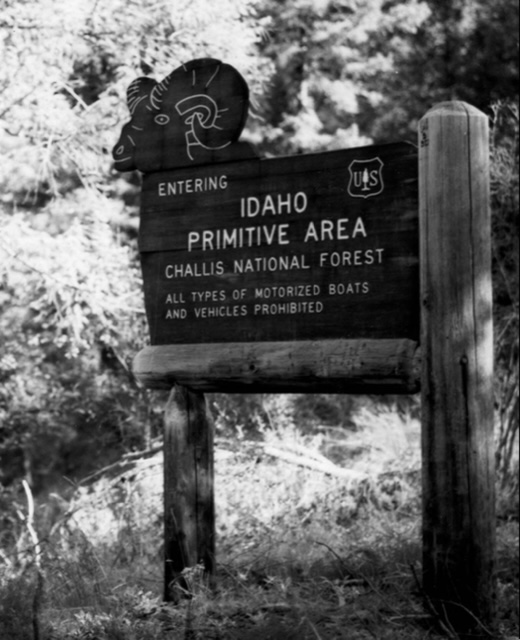
Fairly early in the summer we learned that Governor Cecil Andrus had invited President Carter to float down the Salmon River’s Middle Fork. We all believed excitedly that the president would at some point stop by Salmon. While the presidential party never made it to Salmon City before or after the float trip, the visit President was so impressed by his float trip down the Middle Fork that wholeheartedly came to support Senator Church’s efforts to establish a massive wilderness area surrounding the Middle Fork of the Salmon River.
Two years later on July 23, 1980 Carter signed the Central Idaho Wilderness Act at a White House ceremony. Upon signing the legislation Carter remarked “A few minutes ago I was talking to my own staff members and to Senator Church and to Cecil Andrus. I think if I had to pick out the three or four best days of my life in politics, it was the time I spent going down the Salmon River by raft two summers ago. This was a delightful trip. Not only was it restful and filled with beauty, but also we had good companionship with me and Cecil Andrus. And I might add that my raft caught more trout than his raft did- [laughter] -at least that’s the official Government position. The River of No Return, encompassing the Middle Fork of the Salmon River, is indeed one of our nation’s treasures. This legislation, introduced, sponsored by Senator Frank Church, is the largest single contribution to the wilderness area in the lower 48 States, and I think is a major step forward toward preserving what we have as a precious treasure for this generation and for our children’s children as well.”
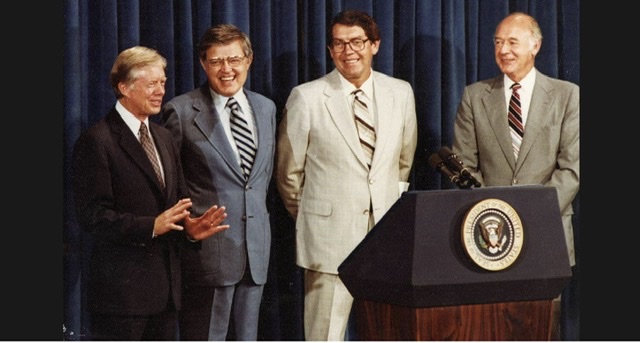
President Jimmy Carter, Sen. Frank Church of Idaho, Idaho Gov. John Evans and Sec. of the Interior Cecil Andrus share a stage
following signage of the act that created what is now known as the Frank Church-River of No Return Wilderness Area. Carter Presidential Library Photo
Four years later, Congress honored Frank Church’s contribution by renaming of the wilderness the Frank Church River of No Return Wilderness. Church passed soon after from pancreatic cancer at the age of 59.
That Fall, at the end of my temporary assignment, “times being what they were” I packed and moved to Shoshone, Idaho for a full time job with the BLM. While leaving Salmon left an ache in my heart, my experiences there changed my life. For me, Salmon will always be the quintessential Idaho town. To paraphrase the dictionary definition Salmon City is “the pure and essential essence of Idaho.”
These days when I visit Salmon I am no longer an interloper. I’m a tourist. I am not the only one. Salmon is no longer the sleepy town it was in 1978. The town continues to evolve. While the city’s long heritage as an economic center for the area’s ranching, mining and forestry pursuits, the recreational economy has put the city on the regional and national radar. It is truly an all season recreational destination. Renowned for its whitewater sports; hiking, biking, fishing, hunting, horseback riding, cross country and downhill skiing, snowmobiling and ice skating draw many fun seekers to Salmon every year. While you can still spot the occasional logging truck trundling through town you are more likely to spot trailers pulling rafts or snowmobiles. Salmon, as it has for the last 155 years, marches on as Idaho’s quintessential town.
Next: The Problem with Baker Lake

